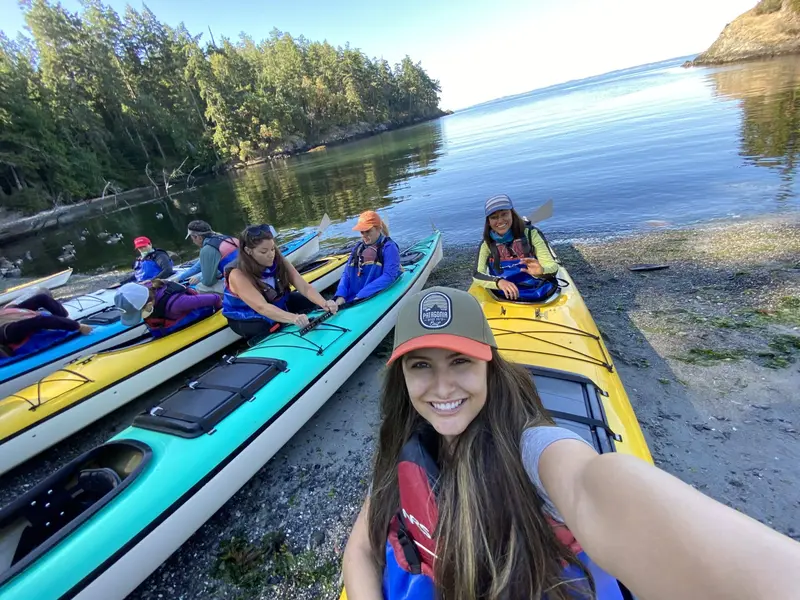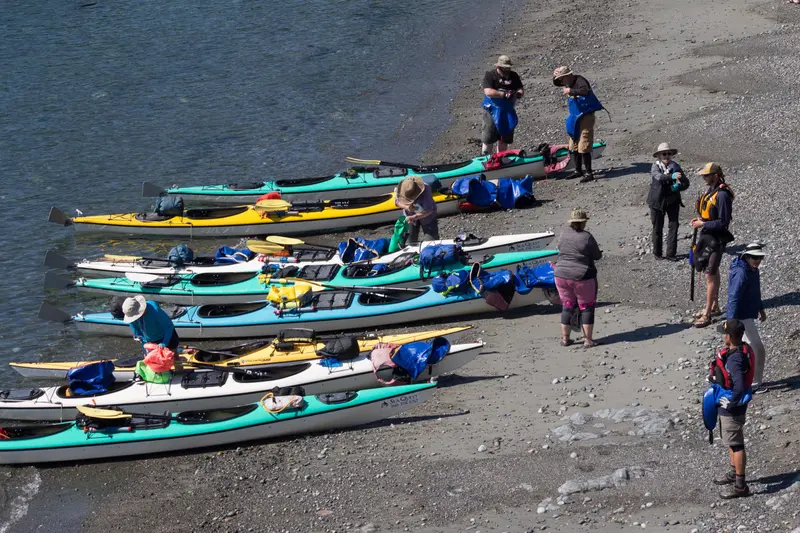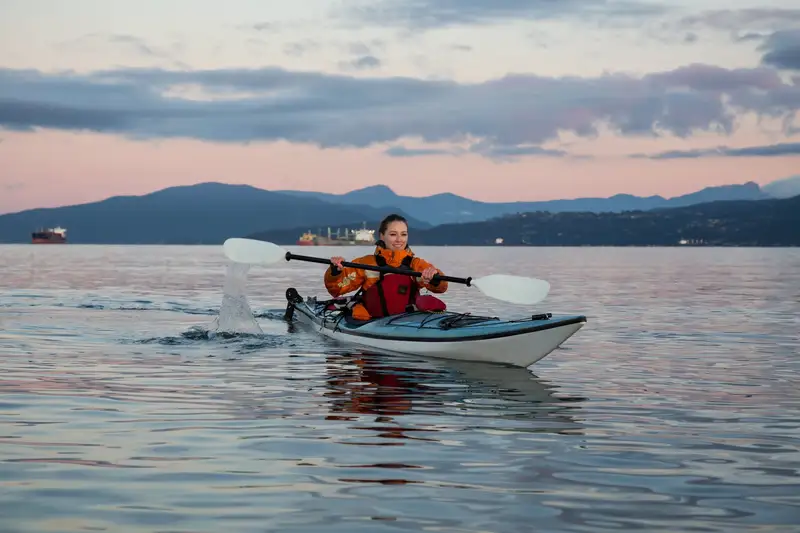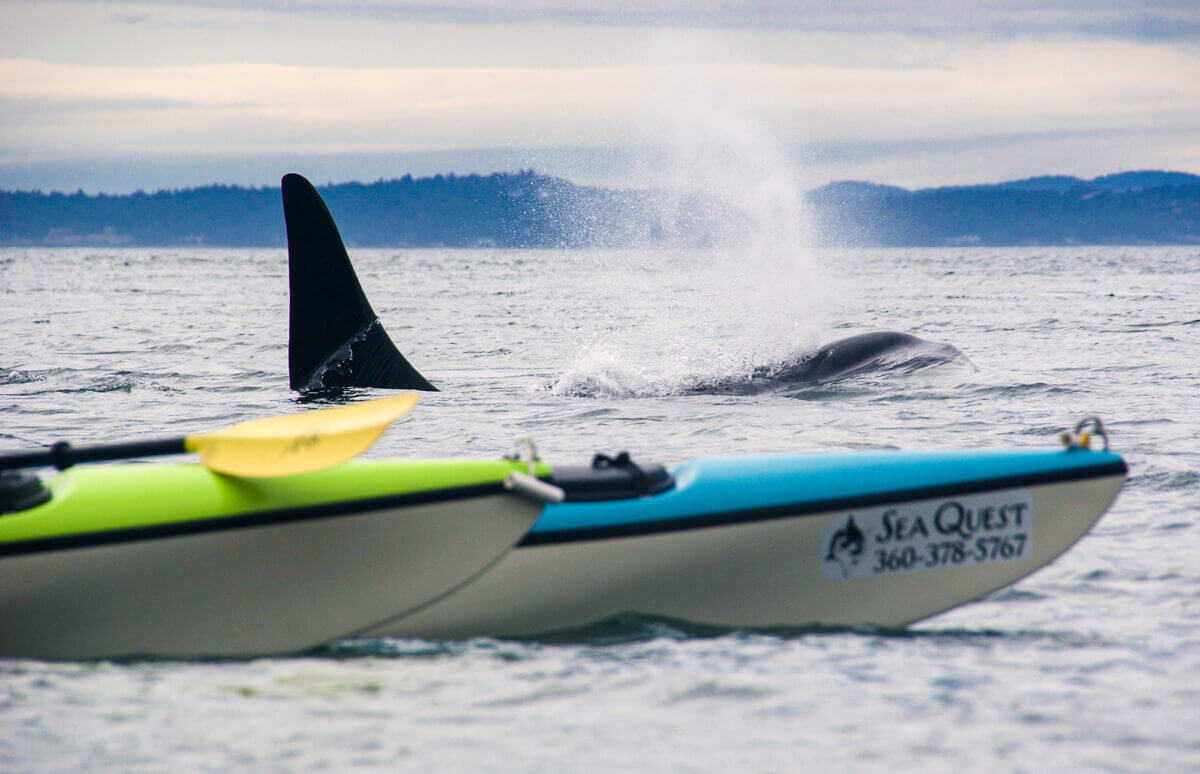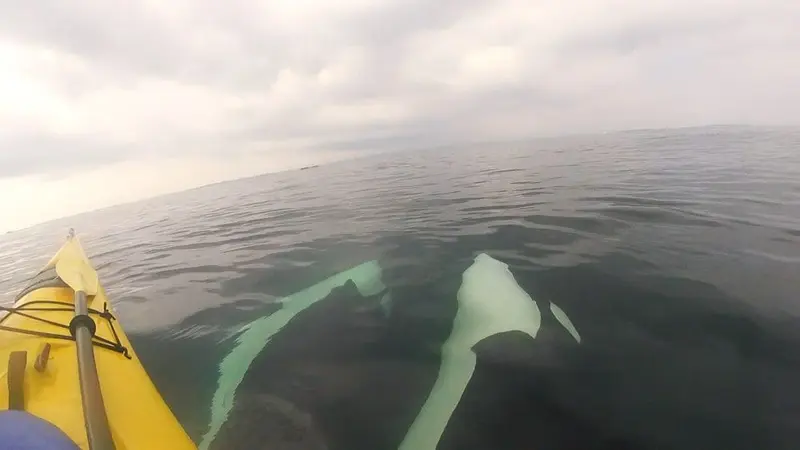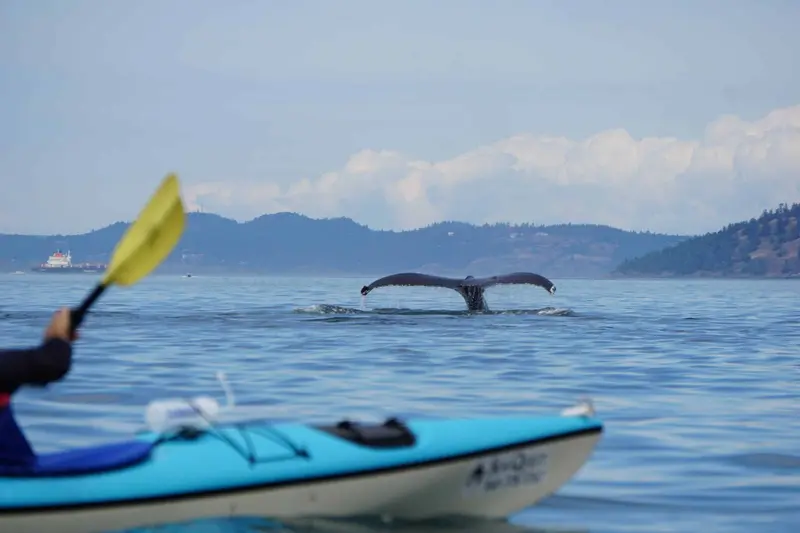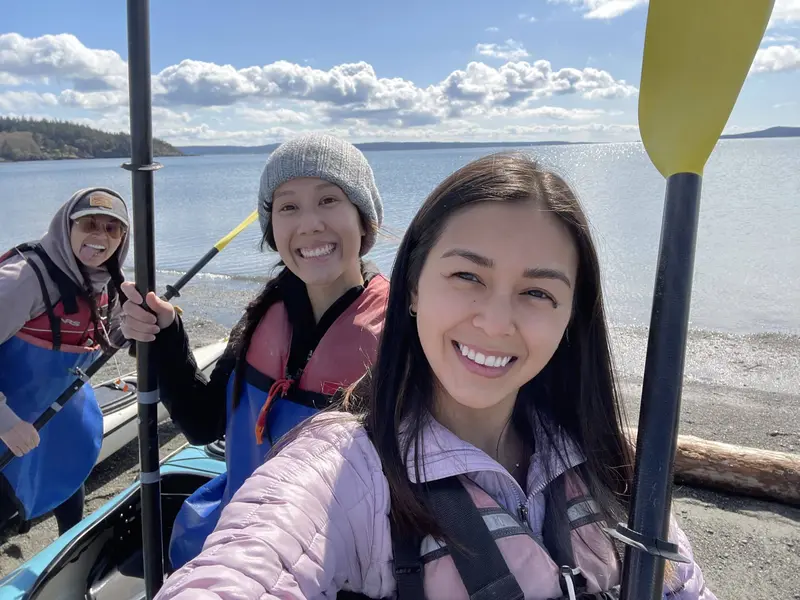How to Avoid Hypothermia While Sea Kayaking
What to Know
When sea kayaking, you need to be aware of the risks of hypothermia. Hypothermia can kill at temperatures well above freezing. Hypothermia is when the body’s core temperature drops below the level where normal biological functions can occur. Any time your body loses heat more rapidly than it can generate, you are hypothermic.
Hypothermia can strike after a capsize or just from being wet in strong winds. Contributing factors to hypothermia include dehydration, insufficient food intake, or alcohol consumption. Hypothermia occurs more frequently in people with low body mass such as women and children. Body mass and a good layer of fat are great protections from hypothermia – just look at those whales and seals!
THE 50/50 RULES OF HYPOTHERMIA WHEN SEA KAYAKING
Rule 1: If the average person were to capsize in 50°F water (the typical water temperature in the San Juan Islands of Washington and Alaska during mid-summer) they would have a 50-50 chance of being able to swim 50 yards in full clothing. Half of them would get stopped “cold” by a severe cramp due to the rapid onset of hypothermia. Coast Guard studies show that even the world’s best athletes are unlikely to swim more than 400 yards (about a quarter-mile) in this sea temperature.
Rule 2: A fifty year-old person has a 50-50 chance of surviving for 50 minutes in 50 degree water.
How Do You Beat the Odds While on a Sea Kayaking Tour?
First, wear the clothing we recommend on our pre-trip packing lists. The clothing we recommend will protect you in all weather and sea kayaking conditions. The fabrics we suggest have special properties for conserving warmth, even when they get wet.
Second, always follow your kayak tour guide’s instructions. Most years we don’t have a single capsize on our kayak trips thanks to our guides experience and good judgment.
Third, follow your guide’s instructions if you do capsize. Don’t swim anywhere! You must keep hold of your kayak and follow your guide’s instructions for getting back into your cockpit. If you feel yourself getting cold before that, it is a good idea to crawl on top of your kayak or your guide’s kayak to get your torso out of the water. Your guide will usually have you back in your kayak in less than 5 minutes. You can then go ashore to get warm or change into dry clothes while floating in your kayak. Our guides are extremely well-practiced at these procedures.
If you were to fall out of a power or sail boat it is best to remain where you are (unless shore is less than 50 yards away) and curl up into a ball to reduce your surface area. Flailing about will waste heat and energy. If you see anything floating nearby, pull yourself up onto it to get as much of your body out of the water as possible. Try to cover your head with anything available as most heat is lost there.
Stealth Hypothermia
Since hypothermia can occur in less calamitous situations, keep an eye out for the early warning signs, such as goosebumps and severe uncontrolled shivering. Mild hypothermia is definitely present if there is slurred speech or incoherent behavior. Action must be taken immediately or the next stage will include lethargy and loss of motor control. Finally, breathing becomes shallow and erratic, there is loss of consciousness, and death.
Treatment Of Mild Hypothermia
The victim should remain active and ask others for assistance if needed. Get dried off and into warm, dry clothes immediately. Keep out of the wind and precipitation if possible. Add fuel and fluids if possible, especially hot and sweet foods and beverages. If needed, wrap up in a sleeping bag and for extra warmth crawl in with someone else in belly to belly contact to share warmth.
If Hypothermia Worsens
Call for help using a cell phone or marine radiotelephone (our kayak guides carry these). Wrap the victim in at least 4 inches of sleeping bags or insulation with special attention to insulating them from cold ground. Do not move the victim until professional help arrives.


